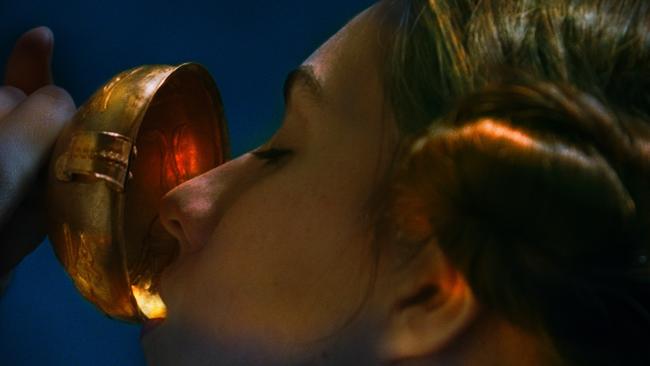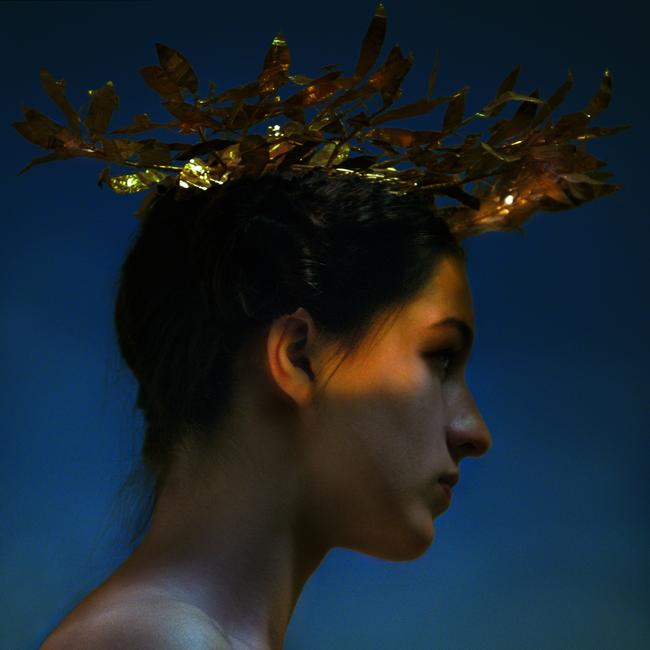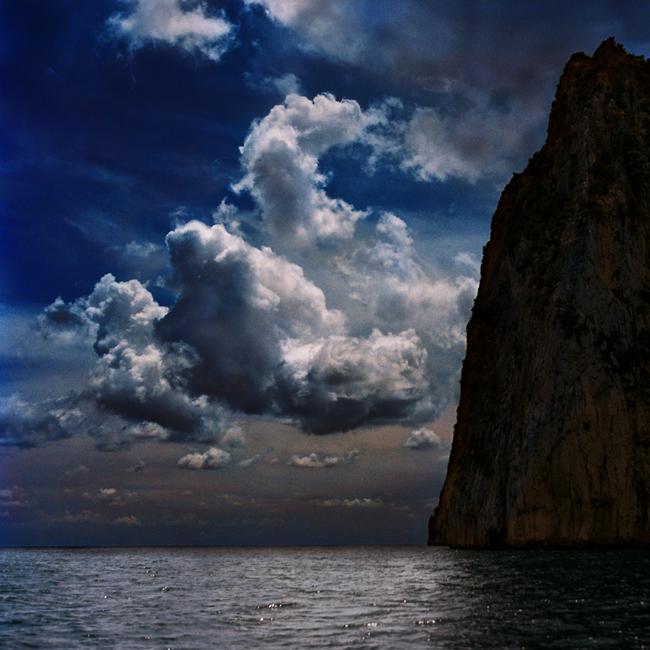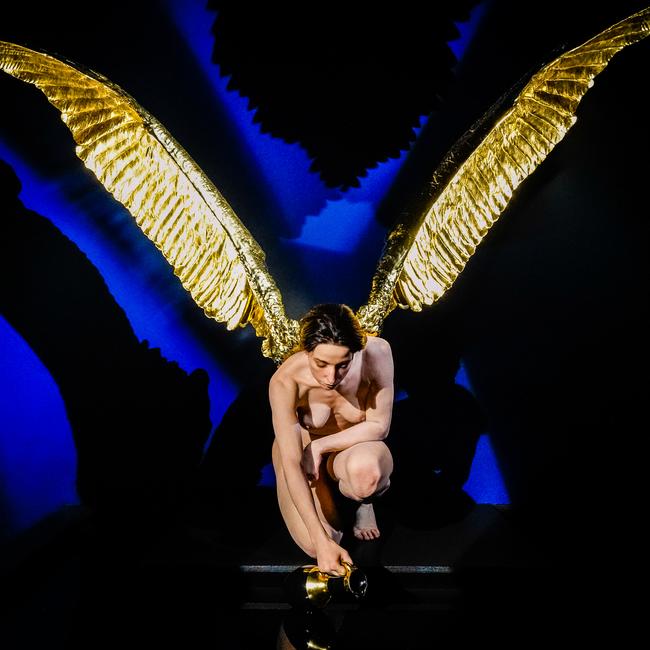Bill Henson exhibition at Hellenic Museum captures rare beauty
Two Hellenic Museum exhibitions, a Bill Henson photographic installation and a Sam Jinks sculpture, bring artefacts to startling life

Bill Henson: Oneiroi
Sam Jinks: The Messenger
Hellenic Museum, Melbourne (no closing dates)
Speaking of anniversaries and commemorations recently, 2022 is also both the centenary and the bicentenary respectively of two notorious episodes of repression carried out by the Turks against the Greeks. The more recent was the massacre at Smyrna in 1922; after the Ottoman defeat in the Great War, Greece had seized parts of the Ionian coast which had in fact always been Greek, and to which the Turks had no more legitimate claim than to have conquered them some centuries earlier from the Byzantine Empire.

In September 1922, the Turks retook the city of Smyrna and burnt the Greek and Armenian quarters in what is known as the Great Fire of Smyrna; tens of thousands died in this atrocity, and the majority of the remaining Armenians were deported and died. This was one of the sequels to the Armenian Genocide carried out during WWI, when the Ottoman government had deliberately rounded up and exterminated at least a million Armenians, a people whose ancient nation long predated the arrival of the Turkish invaders.
An account of this appalling and extraordinarily brutal process was written at the time by the historian Arnold Toynbee and is easily accessible online by searching Arnold Toynbee Armenian Genocide. Unfortunately, the Ottomans were already notorious for their brutality and treachery, and their conquests of Cyprus (1571) and Crete (1669) from the Venetians had also been accompanied by mass killings, torture and murder: 20,000 citizens were murdered after the taking of Famagusta alone, and its Venetian commander, Marcantonio Bragadin, promised safe conduct, was flayed alive (his skin was later recovered and his funerary monument is in San Zanipolo in Venice).
A century before Smyrna, another atrocity had aroused the indignation of the West, just as Ottoman power was beginning its long decline. In 1821, the Greeks, subject to Ottoman rule since the fall of Constantinople in 1453, began the rebellion that would lead to their independence. In 1822, fighting broke out on the island of Chios, very close to the Anatolian mainland, although this mainly involved Greeks from the island of Samos, while the majority of the Chiots had not joined the revolt.

Nonetheless, a Turkish force landed and proceeded to slaughter between 40,000 and 50,000 of the island’s inhabitants, enslaving tens of thousands more. This event, reported in Europe, provoked outrage and elicited widespread sympathy for the Greek cause, even though western governments were at first reluctant to disturb the political order of the Middle East. The most prominent reminder of the episode today is Eugène Delacroix’s monumental painting The Massacre at Chios (Salon of 1824), which many readers will have seen at the Louvre, perhaps without knowing the story behind it or the intensity of the emotions it aroused at the time.
In 1823, Lord Byron sailed to Greece to take part in the revolt, eventually spending virtually all his fortune on the cause and dying prematurely in 1824; Byron was one of the most celebrated authors of the day, and his sacrifice drew even greater attention and sympathy to the cause. Meanwhile, after initial Greek successes, the Ottomans had regained most of the ground lost to the rebels during 1825-26, but then the Royal Navy destroyed the Ottoman fleet at Navarino and French troops were landed to help the Greeks drive the Turks out of the central areas of Greece, which was recognised as independent in 1830.
It was the dream of Greece that led men like Byron to give everything to help resurrect her people and their culture from the ignoble slumber into which they had sunk under the Ottoman yoke. And so it is fitting that the series of photographs that Bill Henson has produced as a commission for the Hellenic Museum should be called Oneiroi – dreams in Greek – for these images are like reveries in which ancient artefacts are awakened into life.
The artefacts are from the museum’s collection of long-term loans from the Benaki Museum in Athens. They include a gold cup from the Mycenaean period and, from over a millennium later, an exquisitely fine gold wreath from a Hellenistic tomb. The wreath, or more exactly what the Greeks called a crown or stephanos, represents the coronets of myrtle leaves that guests would wear at a banquet; turned into immortal gold, it implies that the dead man will enjoy eternal feasting in the afterlife. Other objects are humbler and more recent, like a necklace made during the period of Ottoman domination, or a dagger that belonged to a revolutionary leader. But what brings them to life is contact with a living body, for all of these things were once worn or handled by men and women – the very presences that are lacking in a museum display. And no photographer understands the sensual electricity of the body better than Henson.
Finding the right model was not easy; apparently it was only after some fruitless attempts at casting that Henson found her by chance. She is beautiful, but with classically harmonious features that also lend her an androgynous ambiguity, enhanced by her youth – a time when the heavier features of either sex have not yet asserted themselves. This too is dreamlike: she passes easily from feminine when wearing the necklace or drinking from the cup to masculine when wearing the crown. The transformation is subtly enhanced by pose and gaze as well as by the arrangement of her hair.
The photographs are relatively few and spaciously installed in a handsome, darkened sitting room, so that the visitor reclines at ease, communing with the intensely saturated, moody and shadowy visions that float on the walls all around. Of these the youthful figure with the crown of golden myrtle leaves is – together with the girl draining the golden cup – the most memorable, perhaps precisely because it is the most ambiguous of the images, both in its androgyny and the way that the firmness of the pose and gaze is qualified by the shifting crepuscular lighting of the features.
This photograph is set in prominent isolation on one wall between the two tall windows of the room; to its right, on the adjacent wall, is another of the most beautiful pictures in the series, although it has neither figure nor any object from the Benaki collection: instead it is an evening seascape with grandiose clouds and a sheer cliff dropping straight to the sea. This is a subject Henson has used before: the island of Capri, where Tiberius’ Villa Jovis is set at the very top of the rocky crag; a place from which no doubt, far from the turbulent world of Rome, he too could dream of Greece.
Downstairs there is another work commissioned by the museum, in this case from Sam Jinks, whose subject is the goddess Iris, the second of two divine messengers in Greek mythology, the better-known being Hermes or Mercury. Thus in the final book of the Iliad, Book XXIV, Zeus first sends her to Thetis to order her to have her son Achilles release the body of Hector, and then to Priam to assure him that he can go to the camp of the Achaeans without fear.
In Hesiod’s Theogony, she has another special role: when the gods swear an oath, it is by the terrible river of the Styx, and it is Iris’ duty to descend to the underworld and bring back a bowl of the dark water which makes even immortals who perjure themselves fall into a catatonic state for a full year (Theogony, 780 ff.).
Iris is also associated with the rainbow (hence our word “iridescent”), and she appears on the west pediment of the Parthenon, clothed, as female figures always were in the Classical period, but with her light garments pressed close to her limbs by the wind through which she is rushing; this relief was in turn the inspiration for the Hellenistic masterpiece The Victory of Samothrace.
Jinks’ work is not only striking but genuinely surprising; in fact, it is not too much to say that the effect is momentarily breathtaking. We see before us, in a darkened room, a naked female figure crouching down by a pool to fill a pitcher with water. She has long golden wings spread above her as though ready to take flight but is quietly intent on her task. The illusion is compelling, as though we had surprised the goddess herself collecting water from the river of death.

The figure is a hyperreal sculpture, like the sort of models that are made for special effects in cinema, finished in synthetic materials that match the appearance of flesh and hair. But the hyperreal effect alone would not impress us in the same way without its elaborately non-naturalistic staging. The pool before her is black as ink, so that the winged goddess is doubled by her own reflection, an uncanny and dreamlike spectacle; the water, meanwhile, is almost but not quite immobile, subtly animating the stillness.
Jinks has fabricated pieces for artists who outsource the making of what they present as their own work, but I was first struck by his self-portrait Divide (2011), in which half the face was cut away to reveal the skol beneath. I assume he has used a model for The Messenger too, and has employed his remarkable technical skill to reproduce her appearance exactly.
If so, this model, like Henson’s, is well chosen. She is beautiful, but according to classical aesthetics rather than those of contemporary consumer and fashion culture: that is to say, her proportions are average and harmonious, not extreme or exceptional. Her features are serene and her whole attitude is natural and expressive of its action.
The hyperreal mode can be tedious unless artists find a way to transcend superficial naturalism, because the literal reproduction of appearances is never the main concern of art; it is rather in the transformation of the world into art, or the approximation of our impressions in materials of an inherently different nature, that we articulate and make tangible some intuition about experience.
And that is why whenever art gets too close to literal imitation – when painters copy photographs or sculpture is cast from real bodies – it loses its imaginative potency.
The reason that this does not happen with Jinks’ work is, once again, that it does not consist solely of the hyperreal figure of the young woman. This alone would have been technically impressive but aesthetically much less interesting. The reason that his work is successful is that this hyperreal figure is, as in a film, only an element in the whole: it is the surreal mise-en-scène, the poetic action, the mythological allusion, the golden wings, the Stygian blackness of the pool and finally the use of light and music that produce, in their alchemical conjunction, a strangely memorable vision that is both antique and contemporary.




To join the conversation, please log in. Don't have an account? Register
Join the conversation, you are commenting as Logout